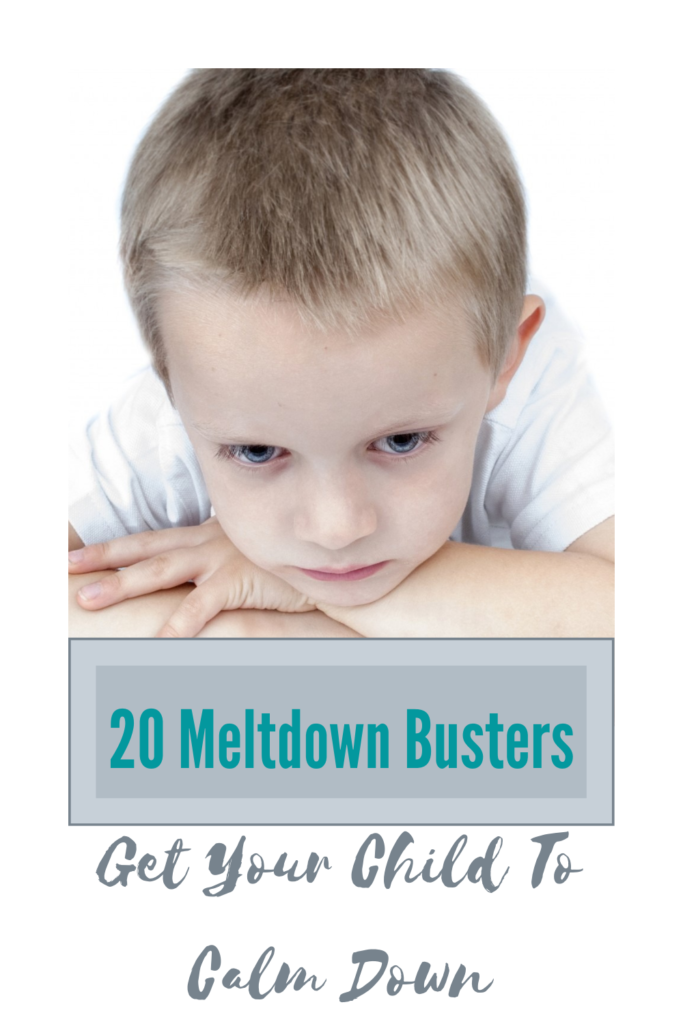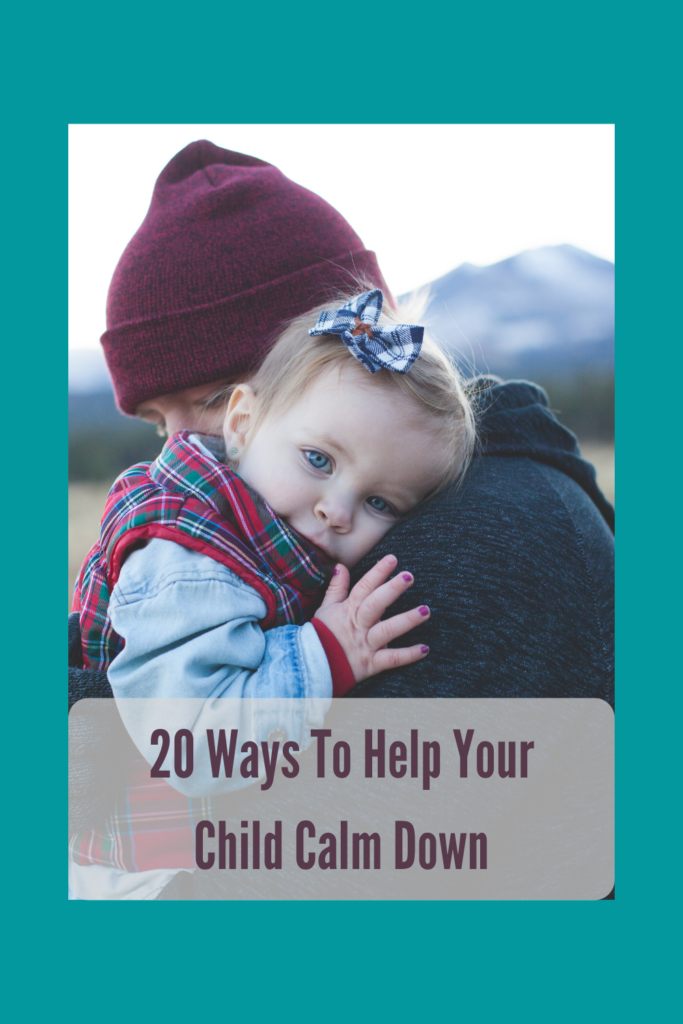Use the phrases that work!
Do you ever get tired of hearing yourself say the same thing over and over when your child has a temper tantrum? As parents, we tend to stick to the same script to get them to settle down: “Calm down.” “Be quiet.” “You’re okay.”
How does your kiddo respond? Do they instantly stop crying and go back to playing nicely? More than likely the answer is no. That’s alright. As parents, our job is to help our children get through those tough emotions and give them the skills they need so that they can calm down.
We have the tools for you to say the right things so your littles respond to your words. Keep reading to get your 20 meltdown busters!

“When kids are overwhelmed by big emotions it’s our job to share our calm, not join their chaos.” L.R. Knost
The quote above is the key to getting our children to calm down when they are in the middle of a meltdown.
Share Calmness
Kids get worked up, it’s a natural part of their day. Parents natural response is usually to say “calm down.” When our kids escalate throughout the day it’s also natural for us to feel the stress! We might find ourselves joining their chaos instead of sharing the calm.
To overcome this obstacle the first thing to do is, well remain calm. How do you do that when your surroundings are loud and chaotic? How do you keep your cool? With positive words!
Be mindful of your word choice. When we are stressed we usually resort to phrases that include, words like “don’t,” or “no.” In other words, we reach for negative sounding instructions to get our kids to calm down. Our non-verbal tone might be heightened too. Using negative words drives up our anger levels.
Finding positive word choices reinforces our attitude to refrain from getting upset. It helps us remain calm.
So when you’re wanting to say no, don’t, can’t, won’t, or never, try picking the opposite word. For example, if you were to say, “can’t you ever listen,” try saying, “can you please listen?” It’s the same message just worded more favorably.
Show Calmness
The problem with telling our kids to say “calm down” is that it’s a vague command. As adults, we understand what calm means. A two-year-old doesn’t always get it.
To get our kids to understand what “calm down” means we need to show them. There are two ways to do this.
The first way to show them is by modeling peace ourselves. Our actions speak louder than words. When you get frustrated over something show how you take deep breaths to keep your emotions in check. When an argument arises keep your vocal tone at a normal volume.
Children watch our every move, describe what you’re doing as you do these things. You can say something like, “Mommy is upset that I can’t find my keys. I’m going to take 3 deeps breaths so I don’t get mad and the look for them.”
The 2nd way to show calmness is by helping them practice calm actions themselves. This way when they are told to hug a pillow they know what to do. Also, describe tranquil actions you want them to display. So instead of saying “calm down,” get more specific and say, “I see you are feeling angry. Let’s take a break to help us use our words without yelling.”
Now that you know how to share and show the calmness with your child let’s dig in and see how we can apply this knowledge to get our kids to calm down when they are having a meltdown.

Calm Down Phrases That Work
Below is a list of 20 meltdown busters for you to try with your kids. Why do they work? They are positive which helps you maintain control of the situation. They are specific which can help your child learn coping skills to calm down. They help nurture and validate your child’s big emotions too.
Meltdown Busters
- Deep breath time! Let’s fill our bellies up with air like a balloon
- Can I help you with a hug?
- My ears are listening and I hear you say (label upset words.) Can we find a quiet way to talk this out?
- I can see you are starting to (label upset action.) Let’s take a break.
- We can figure this out together.
- What will help you (offer a choice of calming activity)?
- Let’s give this (current activity) a rest and go do (offer another choice.) We can come back to this after.
- I’m here for you can I help with (label helpful action.)
- Fresh air can help you feel better, let’s go outside for a minute.
- I see you’re (label feeling) let’s count to 10
- I hear your loud voice. Sitting in a quiet space can help quiet your body.
- Can I show you how to try it in a different way?
- Sometimes hugging a pillow helps with (label upset feeling/action) want to try it?
- You’re working so hard would you like to relax a bit with (offer a favorite pastime?)
- Pick up your dandelion puff and blow it away! (deep breathing exercise)
- Squeeze your hands into a fist, now open them and throw your frustration away!
- Time to blow out some birthday candles! (deep breathing exercise)
- Let’s pretend we are smelling some roses. (deep breathing exercises)
- Close your eyes and think of your favorite (something)…
- Music can help, want to listen/sing your favorite song?
Pick and choose these phrases that work best for your kids! Having key phrases in your tool belt will help you keep your cool so you won’t be grasping for straws during sticky situations. These 20 meltdown busters will teach and get your kids to calm down.